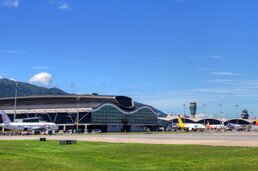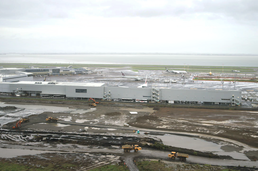
Major Stormwater Expansion Improves Flood Resilience and Water Treatment at Auckland Airport
- 2023-10-25
- 3,500m of new stormwater pipes to increase stormwater resilience across key airport assets
- Large scale deployment of coupled wetland biofilter technology to maintain high levels of water quality into the Manukau Harbour
- Built to manage stormwater from a 106ha catchment within a footprint a third of the size of a traditional stormwater pond.
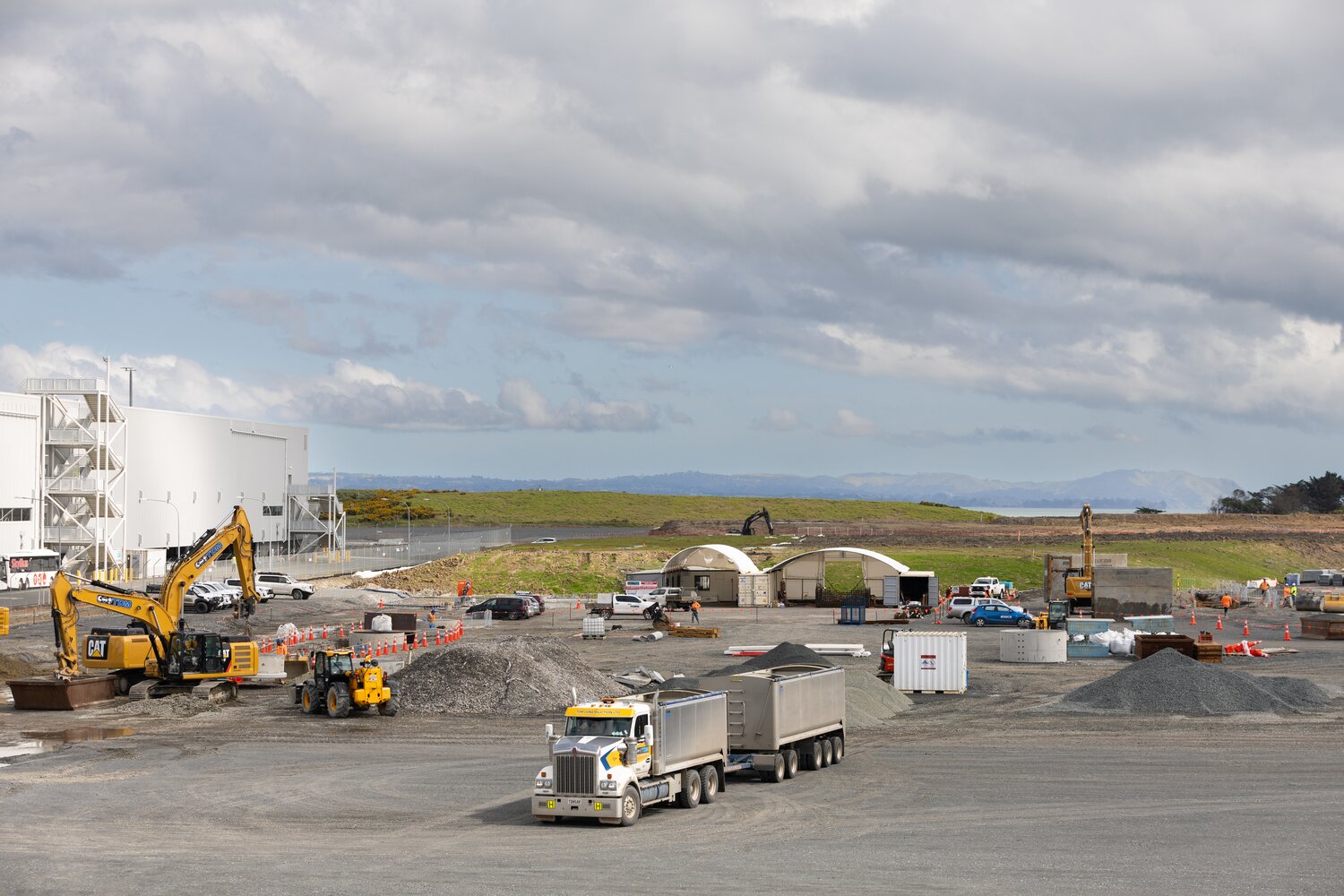
More than three kilometres of stormwater pipes, some big enough for an All Black to stand up in, are going in the ground under Auckland Airport’s new airfield development.
Once complete, around 1,500 individual sections of pipe each measuring up to two metres in diameter, will capture stormwater flows from more than 100 hectares of land north of the international terminal, directing it away and into an innovative new treatment system. Featuring wetlands and biofiltration within a stormwater pond, native plants will be hard at work cleaning water before it flows into the Manukau Harbour.
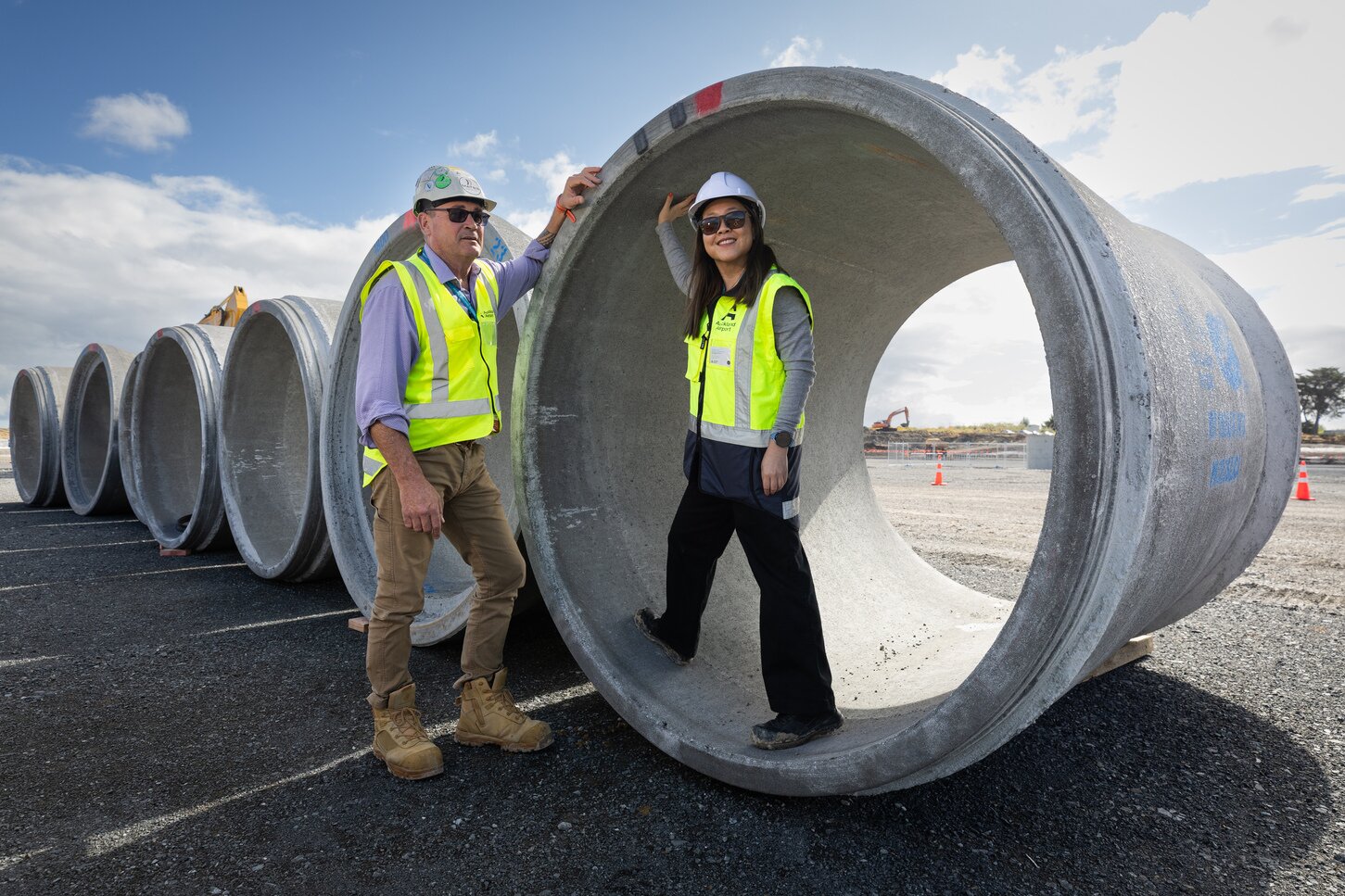
It’s being put in place as part of Auckland Airport’s biggest airfield expansion since it opened in 1966, with six new aircraft stands, five of which will have in-ground jet fuel reticulation and other services, on 250,000m2 area under construction alongside Pier B, north-west from the international terminal. The project was underway prior to the pandemic but was paused in March 2020.

Auckland Airport Chief Sustainability & Master Planning Officer, Mary-Liz Tuck, said upgrading and modernising the airport’s infrastructure means boosting future capacity and resilience – both to the aeronautical assets but also the utilities that underpin airport operations.
“We’re making serious progress out on the airfield with the next stage of a major airfield project, which will ensure we have sufficient future aircraft parking and layover capacity, particularly while the new domestic terminal is being built.

“A major component of the airfield expansion is a significant upgrade to the stormwater management system for the western end of the airport. It’s a big catchment area – imagine more than a hundred rugby fields – covering paved airfield, future cargo precinct developments, and the surrounding land.
“As Auckland Airport plans for the future, we need to prepare for both the regular rainfall we get in Auckland but also some of the more extreme deluges that come with climate change like those we experienced earlier this year, causing the international terminal to flood,” said Ms Tuck.
.jpg)
Using coupled wetland biofilter technology, a water treatment system new to New Zealand, a native plant wetland will work to remove contaminants through natural processes like sedimentation and plant uptake, with a small stormwater pond biofiltration system providing additional treatment and temporary storage during heavier rain. A bird-proof netting cover for the pond will make sure it doesn’t become a habitat for wetland birds, which could pose a risk to aircraft.
“One of the key features of this system is its ability to successfully treat three times the volume of water compared to a similar sized traditional stormwater pond set-up. That’s helpful when you’re working around existing infrastructure and operational areas but need to significantly scale up stormwater treatment capacity,” Ms Tuck said.
“It’s not just about scale and volume either. Auckland Airport is uniquely located alongside the Manukau Harbour and with that comes a real sense of responsibility. We take a very long-term view when making decisions, and that applies to the environment and community in which we operate. In the context of this project, that means making sure the water discharged into the harbour is of the highest quality possible.”
Auckland Airport has a comprehensive stormwater masterplan guiding infrastructure development around the airport precinct. A climate change study was commissioned in 2019, with further studies since then determining the extent of flooding and inundation risk, showing the airport infrastructure was sufficient to cope with a range of climate change scenarios.
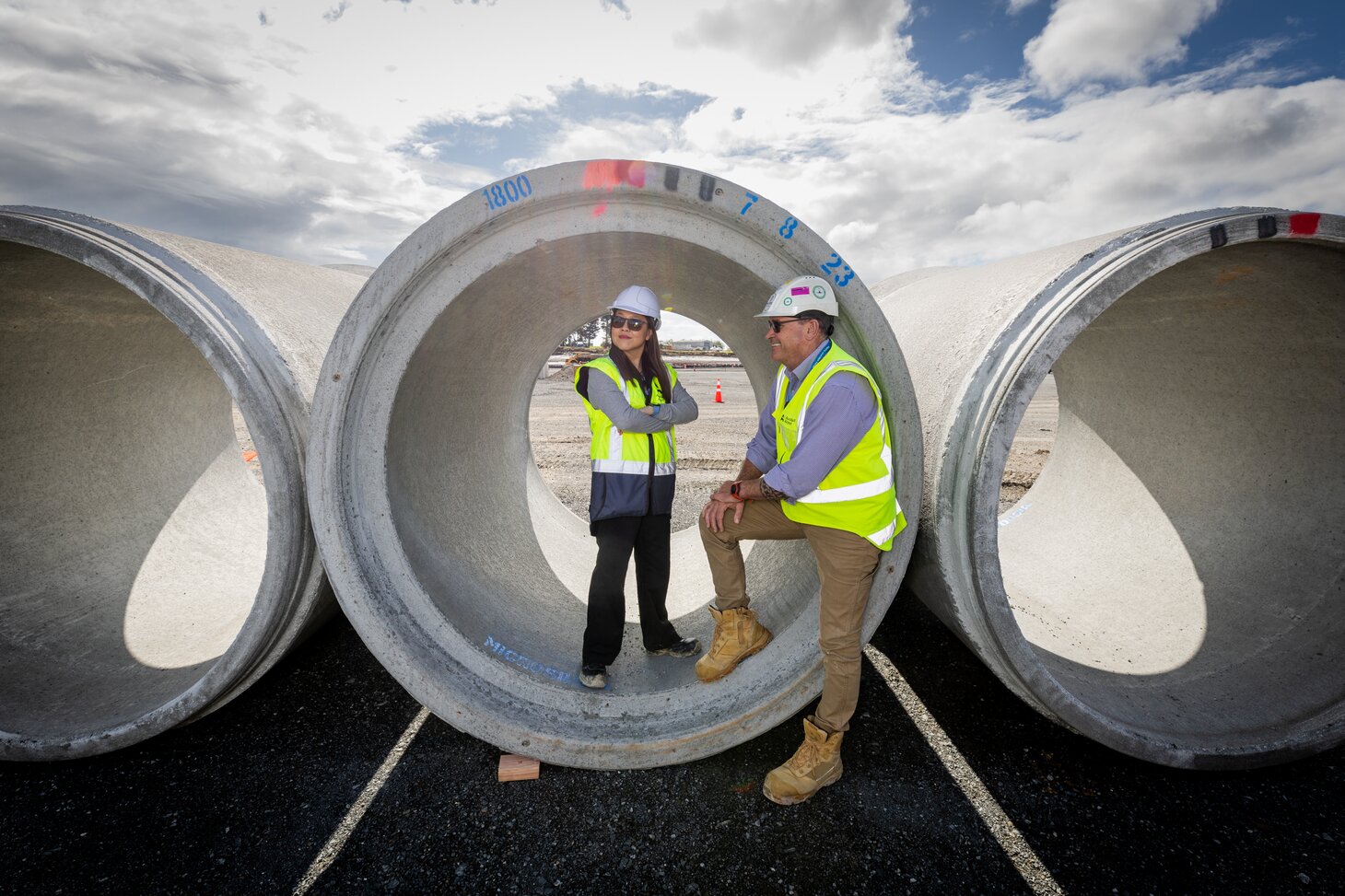
“Although we knew we were in a good place, the historic rainfall event that flooded the international terminal in January meant a full review of our stormwater calculations.
“We’ve always used the delivery of major infrastructure as an opportunity to upgrade the utilities, including stormwater, which provide the important backbone for airport operations. We were comfortable what was going in the ground would perform well, but when you’re talking about construction on this scale and longevity, it’s going to be a while before you even think about going back in to dig it up and replace it.
“We need to get it right, and for us that means making certain stormwater systems going in across the precinct can handle weather extremes.”
Project highlights:
- 106ha catchment serviced by Coupled Wetland Biofilter system
- 3.5km of stormwater pipework in total; 1.7km of pipework over 1800mm diameter
- 250,000sqm expansion of airfield to add taxiways and seven remote stands built to Code F standard
- Allows for the future addition of airbridge capacity to the northern side of Pier B and connection with future cargo area
- Construction delivered by Brian Perry Civil.
- CATEGORY
- COUNTRY / AREA
- New Zealand
- AUTHOR
- Auckland Airport

